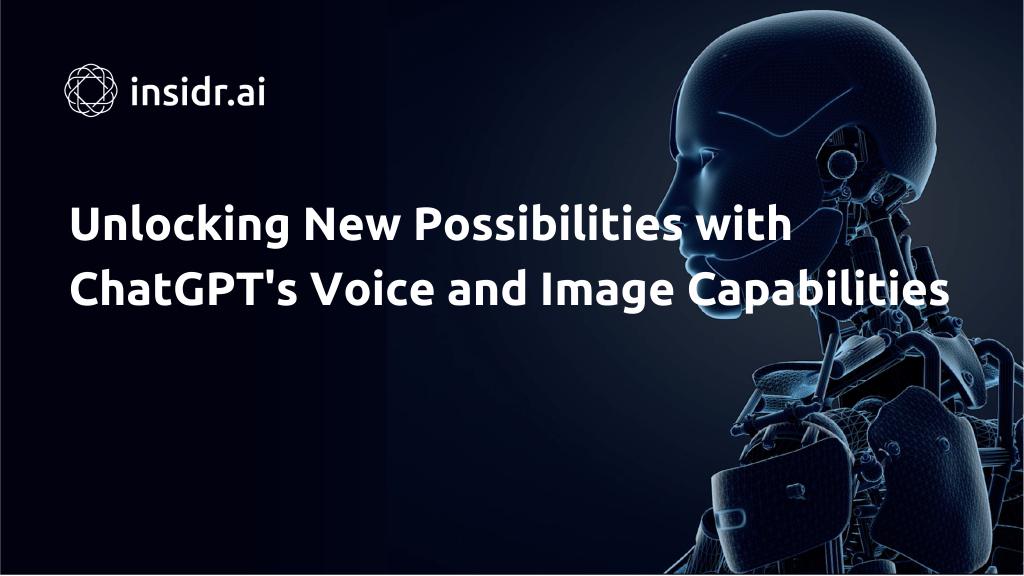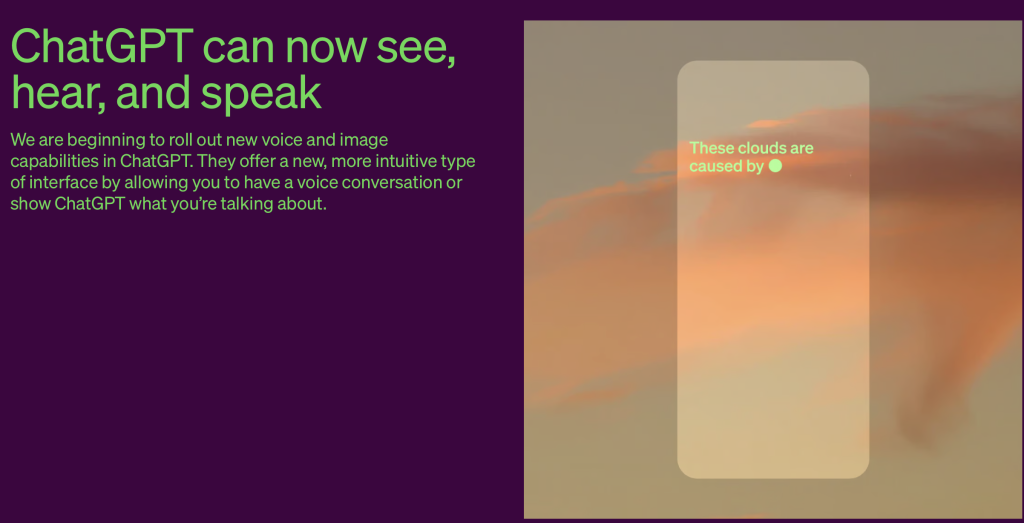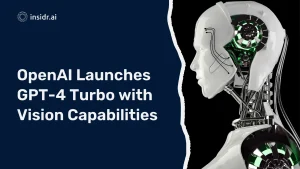
In an ever-evolving technological landscape, OpenAI continues to push the boundaries of AI capabilities.
The latest development in the ChatGPT saga is nothing short of remarkable.
ChatGPT, already renowned for its prowess in text-based interactions, has now expanded its repertoire to include voice and image processing capabilities.
This remarkable enhancement brings a new level of versatility and interaction to the AI, allowing users to engage in conversations, share images, and make life more efficient and enjoyable.
A Multi-Sensory Experience
Hear and Speak with ChatGPT
Voice recognition technology has advanced by leaps and bounds, and ChatGPT harnesses this power to enable seamless voice interactions.
Now, you can engage in back-and-forth conversations with ChatGPT using nothing but your voice.
Whether you’re on the move, relaxing at home, or in need of a bedtime story for your family, ChatGPT is ready to lend its voice to your needs.
To start conversing with ChatGPT through voice, simply navigate to the “Settings” in the mobile app, and opt into voice conversations.
Once done, tap the headphone icon located in the top-right corner of the home screen, and you can choose from five distinct voices to personalize your experience.
These voices, crafted in collaboration with professional voice actors, exude a human-like quality that makes your interactions with ChatGPT even more engaging.
The technology behind ChatGPT’s voice capabilities is underpinned by a state-of-the-art text-to-speech model, capable of generating remarkably human-like audio from mere text inputs and a few seconds of sample speech.
This innovation is further fortified by Whisper, OpenAI’s open-source speech recognition system, which seamlessly transcribes your spoken words into text.
Voice chat with ChatGPT opens up a world of possibilities. You can have casual conversations, request stories, or even resolve debates at the dinner table.
The potential applications are as diverse as your imagination.
See the World through ChatGPT's Eyes
Accompanying the voice capabilities, ChatGPT now boasts image-processing capabilities that add an entirely new dimension to your interactions.
You can share images with ChatGPT, inviting it to analyze, discuss, and provide insights on various visual cues.
Imagine you’re traveling and come across a stunning landmark.
With ChatGPT’s image capabilities, you can snap a picture and engage in a live conversation about its historical significance or unique features.
When you return home, take a snapshot of your fridge and pantry to determine your dinner options, and ChatGPT can even assist you with step-by-step recipes.
Additionally, you can use this feature to help your child with math problems by taking a photo, circling the problem, and having ChatGPT share hints and solutions, turning learning into a fun and interactive experience.
To initiate image-based conversations with ChatGPT, simply tap the photo button to capture or select an image.
If you’re using iOS or Android, you can tap the plus button first. This capability is available on all platforms, ensuring accessibility to users across the board.
The image understanding of ChatGPT is powered by multimodal GPT-3.5 and GPT-4 models, which apply their language reasoning skills to a wide range of images, including photographs, screenshots, and documents containing both text and images.
This integration of text and visual data enhances the depth and context of your interactions with ChatGPT.

Gradual Rollout for Enhanced Safety
OpenAI’s commitment to responsible AI deployment remains unwavering. Their goal is to build Artificial General Intelligence (AGI) that is not only powerful but safe and beneficial to humanity.
The introduction of voice and image capabilities follows a gradual rollout strategy, allowing OpenAI to refine risk mitigation measures while preparing users for more advanced systems in the future.
Voice Technology and Its Applications
The new voice technology is a game-changer, offering creative and accessibility-focused applications.
But this can also bring new challenges and things to fix.
To mitigate these risks, OpenAI has focused the application of voice technology on voice chat, collaborating with voice actors and partners like Spotify for responsible and innovative use cases.
Spotify, for instance, utilizes this technology for its Voice Translation feature, enabling podcasters to expand their storytelling reach by translating podcasts into additional languages in the podcasters’ own voices.
This collaborative approach ensures that the technology is harnessed for positive purposes while minimizing misuse.
Vision-Based Models for Safety and Utility
The introduction of vision-based models comes with its own set of challenges, including the risk of generating inappropriate content or misinterpreting high-stakes domain data.
Prior to a broader deployment, OpenAI rigorously tested these models with red teamers and alpha testers to assess risks related to extremism, scientific proficiency, and more.
These assessments have allowed OpenAI to establish key guidelines for responsible usage.
OpenAI’s vision for vision capabilities aligns with its mission to assist users in their daily lives.
By actively collaborating with organizations like Be My Eyes, a mobile app for blind and low-vision individuals, OpenAI has gained insights into the valuable applications and limitations of the technology.
Users have found it beneficial to engage in general conversations about images, even when they contain people in the background, such as when someone appears on TV while trying to adjust remote control settings.
To ensure privacy and accuracy, technical measures have been implemented to restrict ChatGPT’s ability to analyze and make direct statements about individuals.
OpenAI recognizes the importance of user feedback and real-world usage in further improving these safeguards.
Transparency and Responsible Usage
OpenAI is dedicated to transparency regarding the model’s limitations and capabilities.
Users are encouraged to exercise caution with high-risk use cases and to verify results for specialized topics.
It’s important to note that while ChatGPT excels at transcribing English text, its performance with certain non-English languages, especially those with non-Roman scripts, may be less reliable.
In conclusion, the addition of voice and image capabilities to ChatGPT marks a significant milestone in AI development.
It brings a multi-sensory experience that enhances the utility and versatility of this remarkable AI assistant.
As OpenAI continues to refine and expand these features, users can look forward to an even more immersive and beneficial AI interaction.
The journey of ChatGPT is far from over, and the possibilities it presents are boundless.
With responsible deployment, collaboration with partners, and a commitment to user feedback, ChatGPT is poised to play an increasingly valuable role in our lives, assisting and enhancing our daily experiences like never before.
Insidr.ai's comments
The integration of voice and image capabilities in ChatGPT represents a significant leap in AI’s evolution, promising richer, more interactive experiences while emphasizing responsible deployment and user transparency.
Sources
Discover More AI Tools
Every week, we introduce new AI tools and discuss news about artificial intelligence.
To discover new AI tools and stay up to date with newest tools available, click the button.
To subscribe to the newsletter and receive updates on AI, as well as a full list of 300+ AI tools, click here.







